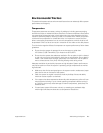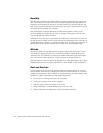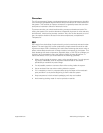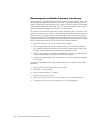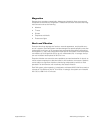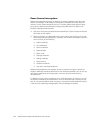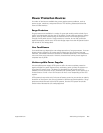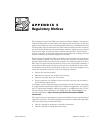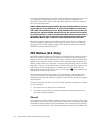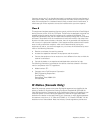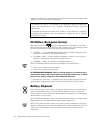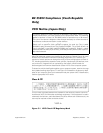
support.dell.com Maintaining the System B-9
)(
A number of devices are available that protect against power problems, such as
power surges, transients, and power failures. The following subsections describe
some of these devices.
Surge protectors are available in a variety of types and usually provide a level of pro-
tection commensurate with the cost of the device. Surge protectors prevent voltage
spikes, such as those caused during an electrical storm, from entering a system
through the AC power source. Surge protectors, however, do not offer protection
against brownouts, which occur when the voltage drops more than 20 percent below
the normal AC line voltage level.
"'
Line conditioners go beyond the overvoltage protection of surge protectors. Line con-
ditioners keep a system's AC power source voltage at a fairly constant level and,
therefore, can handle brownouts. Because of this added protection, line conditioners
cost more than surge protectors. However, these devices cannot protect against a
complete loss of power.
2$
Uninterruptible power supply (UPS) systems offer the most complete protection
against variations in power because they use battery power to keep the system run-
ning when AC power is lost. The battery is charged by the AC power while it is
available, so once AC power is lost, the battery can provide power to the system for a
limited amount of time—from 15 minutes to an hour or so—depending on the UPS
system.
UPS systems that provide only 5 minutes of battery power let you conduct an orderly
shutdown of the system, but are not intended to provide continued operation. Surge
protectors should be used with all UPS systems, and the UPS system should be
Underwriters Laboratories (UL) safety-approved.





